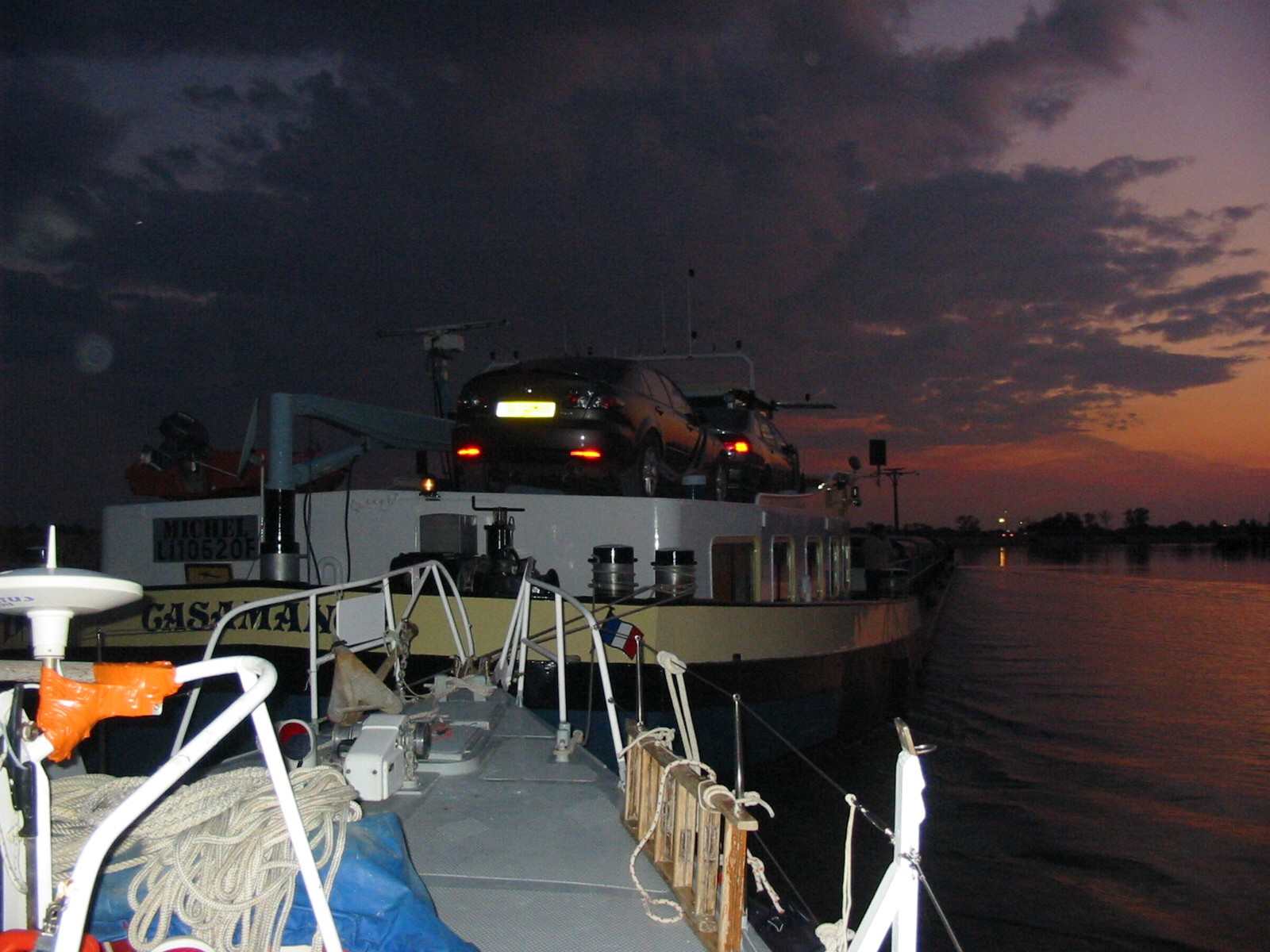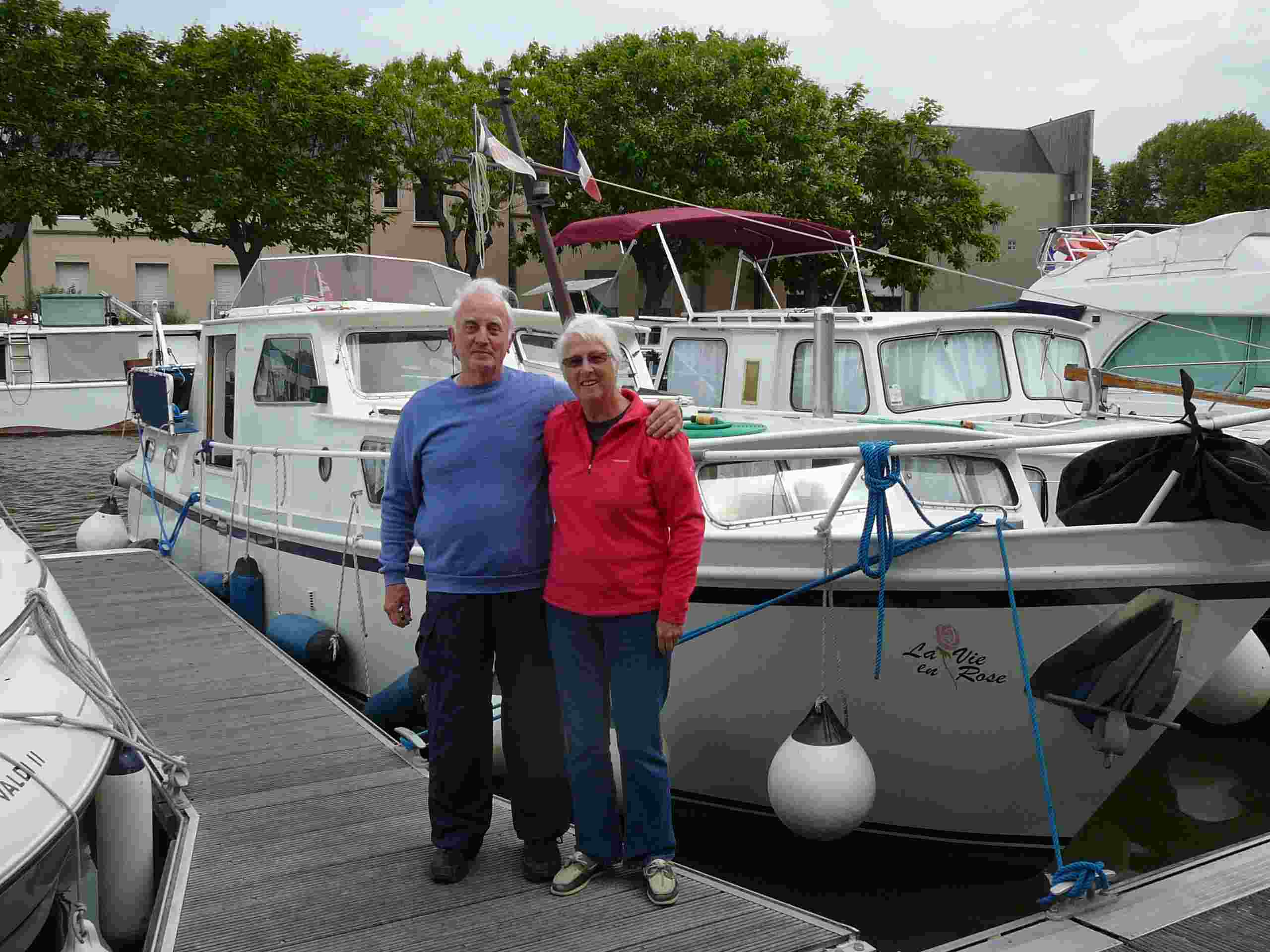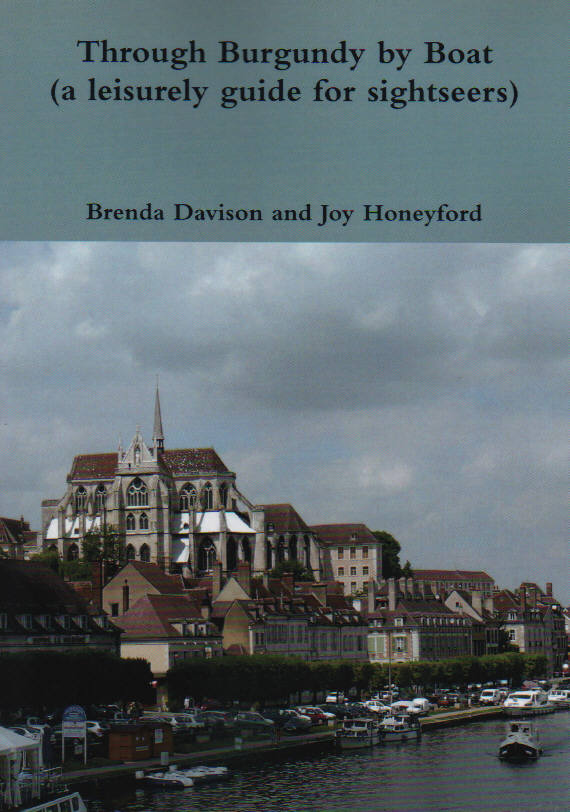The River Rhône
The Rhône rises in Switzerland and all the canals and rivers of northern France empty into it at Lyon and from thereon it is a force to be reckoned with. In Spring the meltwater from the Alps increases the flow, and most of the rainfall of northern France finds its way into this river.
But since 1980 it has been fully canalised over a distance of 310 km from Lyon to Port Saint Louis du Rhône.
Access to the Mediterranean from Port Saint Louis is via a short ship canal as the delta is not navigable.
In 1921 an Act of parliament established the Compagnie National du Rhône which put in hand a vast programme of works to tame the river and the river now alternates between wide deep river sections and 11 diversion canals.
Navigating the Rhône was a hazardous exercise before this time but was a key communications route since Greek and Roman times.
This is now a pleasant experience; there are several marinas and quays where the traveller can loiter and explore the many towns and sites of historic interest. We have known boats to anchor out of the channel on wider parts of the river where there are no groynes.
There are 12 locks all with floating bollards, and waiting pontoons for small boats just outside the gates. These are marked with a No Parking Sign and a notice "Sauf Plaisanciers" (except pleasure boats). Single boats are locked through if no commercial traffic or other boats are expected. You will not wait more than ½ hr. It is usual to communicate with the lock keepers by radio.
The minimum depth is 3.20m, the minimum air draught is 7m above the highest navigable water level.
Navigation alternates between the river itself and 11 diversion canals in which the locks are usually located at the downstream end. When the mistral blows (from the north) entering a lock from upstream can be difficult, and short steep waves may be generated by southerly winds. The channel is often marked by red and white buoys or stakes on the right bank side and black and white markers on the left bank side. There are under water groynes at each side of the channel and care needs to be taken to avoid running in to these.
The current can flow very swiftly depending on the amount of power being generated by the hydro-electric plants (usually less at the week-ends) but does not usually exceed 7 km/h. When combined with the effect of the mistral it can make progress upstream difficult for boats with smaller engines, particularly at times of flood. In 2002 the flood was so severe that the marinas at Arles and Avignon were destroyed, so this is not a river to be taken lightly. However during mid to late summer the flow is much less and most craft will be able to navigate upstream without much difficulty.
Low-powered craft wishing to navigate against the current at other times will find that it is possible to get a tow from one of the many commercial craft which ply the river. Ask at the lock, and at the local 'bourse' where the commercials pick up their work, or simply walk along the quay and ask the bargees themselves. You are likely to be lashed alongside. In 2008 the quoted price for this service was 2.50€ per km and the distance from Port Saint Louis to Lyons is 310 km.
You will find the tale of our trip up the Rhône on my writing page, and an account of a first hand experience follows.
FIRST HAND EXPERIENCE
Since 1996, we have cruised for about five months every year on 'Maverick', our steel yacht - a Bruce Roberts 36. We sailed from Largs on the Firth of Clyde, and travelled slowly via Ireland, England, Biscay, Canal du Midi, Corsica, Sardinia, Italy and Greece to Turkey. We hoped to sell 'Maverick' in the Mediterranean, but, when this was slow to happen, began to sail her back. We arrived at the mouth of the Rhône in early summer this year, with a view to going into the French canals in September, and taking 'Maverick' back to Scotland to try to sell her there in autumn 2009. We had the mast lowered and stored at Port Napoleon and was wintered in St Jean de Losne whilst we were back in Scotland.
In mid September, the Rhône seemed to us to be running fairly fast. A local resident advised us that motoring up using our own engine would be slow, might be hard on the engine, and would use a great deal of diesel. He had heard of people getting a tow from a barge, and said we should ask around at the barges moored on the river bank at Port St Louis, and we also had some advice from Brenda via this website. The local resident gave Margaret an appropriate form of words, something like - Nous avons un voilier et cherchons une remorque vers Lyons, and we set off to find a bargee. Three men were chatting beside one of the barges so Margaret used her French. They said peut-être, and we asked combien? They said 2.50 euros per kilometre. We were trying to work out what that might mean for us, when one of the guys produced a pen and worked out on the palm of his hand that it would be 800 euros to Lyons. This sounded a lot and we said we would think about it, but, by next morning had decided that taking account of the diesel used, time saved and the wear and tear on the crew, it was worth it. The next morning Margaret went back to seal the deal. She saw one of the three men to whom we had spoken previously. He said that he could not tow us with his barge because he was going through the lock at Port St Louis to load up, and would be leaving via the commercial canal. However his brother might do it and he was leaving the next day, Monday. He tried to phone but when there was no reply he took off down the bank on his motorbike, with Margaret trailing behind, to the 105 metre barge Casamance. The brother and his wife were painting the superstructure. After the situation had been explained, the owner of Casamance beckoned Margaret on board and pointed out a dock about 3k to the north, where the barge would take on 2000 tons of salt on Monday morning. We were to meet him there at noon.
We arrived well before noon and assumed we would be moving off during the afternoon, but were met by a frustrated skipper who explained that there was going to be a delay, probably till Monday evening. In fact, because of problems with the loading machinery ashore which kept breaking down, we didn't get away until early evening on the Tuesday. However, we were securely tied up in the sunshine at a free berth, had plenty of supplies, and got a few boat jobs done so were not too bothered.

The photograph, 'Our tow - before craning 2 cars on board', was taken shortly before we left the salt loading dock at 7pm on the Tuesday. The skipper explained that we would move upstream a bit, and then stop to pick up what Margaret understood to be one car, although in the event it turned out to be two. He said he would tow 'Maverick' alongside until he had done this, but that afterwards we would be towed behind with two crossed lines deux cordes croisées. He also said that we would continue that evening to the first lock at Beaucaire, arriving about midnight, and would have to get up at 04.30 on Wednesday morning to be ready for the locks opening at 05.00. We set off in a hurry because another large barge wanted our place at the salt loading dock. The skipper was single-handing the barge, and we were tied alongside. At the junction with the commercial canal, a few kilometres upstream, he reversed the 105 meter barge along to a high loading platform where two people and two cars were waiting. The platform was at just the right height for the people to step on board. One was the wife of the skipper and the other was the guy who had worked out the cost of our tow on the palm of his hand.
By this time it was beginning to get dark. In the dusk the three of them used the crane on the barge to lift the two cars on board. They then hitched us behind them (they ended up using three crossed lines rather than two) and we moved off. We were not directly behind the barge but slightly to the side, so that we were out of the main wash.

The photograph, 'Night tow with two cars loaded', gives an idea of the set-up. We were told to use Channel 10 on the VHF if we wanted to communicate with the barge. This proved very useful indeed when, as we negotiated the fast running currents at Arles, our third line parted. In our hurry to be off we had used as a third line a warp that was really due to be pensioned off - not a good idea. Apart from this incident, it was a remarkably smooth ride up to Beaucaire, where we arrived around midnight as planned. Once again we were securely tied up alongside the barge. We set the alarm for four o'clock and tried to get some sleep.
Before we set off in the morning, the skipper explained the procedure for going through locks. We would be untied from the barge and go through the locks on our own, and then be hitched behind the barge again afterwards. We went through the first lock in the dark, just the barge and 'Maverick', without any real problems, but we realised that it was important to let the barge get well ahead when leaving the lock, so as to avoid the turbulence that it caused. Casamance waited for us outside and Margaret threw lines to get us attached again. This was difficult in the dark despite the powerful deck lights, and it took her a few attempts to get all the lines to the men on the barge (Stanley's tip to aim the rope at the nearest car was a good one). Also, we all had to learn that, when the barge set off with a surge of power, although the 2,500 tons of barge took some time to start moving, poor old 'Maverick' was getting a great sideways surge from the turbulence. We bent our bow rail slightly during this learning process and Casamance acquired two small chips on her smart yellow paint. It helped when, after the next lock, the skipper, who with the other crewman was at the stern getting us hitched, brought down an intercom so that he could communicate with his wife who was up on the bridge at the controls.
It was a busy day and it was fun to travel upstream so quickly. There were some sections, such as the long canalised stretch below Bollènes, where we were particularly glad to be getting a tow because the current was flowing so quickly. At one lock a Dutch yacht, which had left the day before us squeezed in alongside. We waved to them as we pushed on leaving them in our barge's wake.
About six o'clock in the evening, when we were in a lock, the skipper came to the stern of the barge to speak to us. They were going to have to continue that evening till the locks closed, and then get up in the dark again, in order to get the barge to Lyons on schedule. He suggested that we might like to be dropped off at the Port de Plaisance at Valence. If so, they would only want 500 euros, not the 800 previously agreed. We looked up Valence Port de Plaisance in our book and decided that that was an excellent suggestion, since we seemed to be past the most difficult stretches and we felt we could do with a good night's sleep. The skipper collected his money at the next lock, about 17 km below Valence. By the time they waited for at the final lock we had all learned how best to get hitched on and were soon being towed through the dusk to the entrance of the Port de Plaisance. We realised that navigation marks in the river have no lights, but thankfully identified the entrance to the marina with our searchlight and inched towards the 'welcome' pontoon with the shallow water alarm sounding. Meanwhile our barge took off at top speed to try and get to Lyons on time.
We stayed at Valence (a nice town) for two days and then set off under our own steam arriving at Lyons two days later. On our second day we passed 'our' barge heading back downstream, and got a cheery wave from the skipper. We enjoyed our tow and felt it gave us an insight into the life of the bargee. Overall it was a good experience.
Stanley and Margaret Struthers Yacht Maverick






